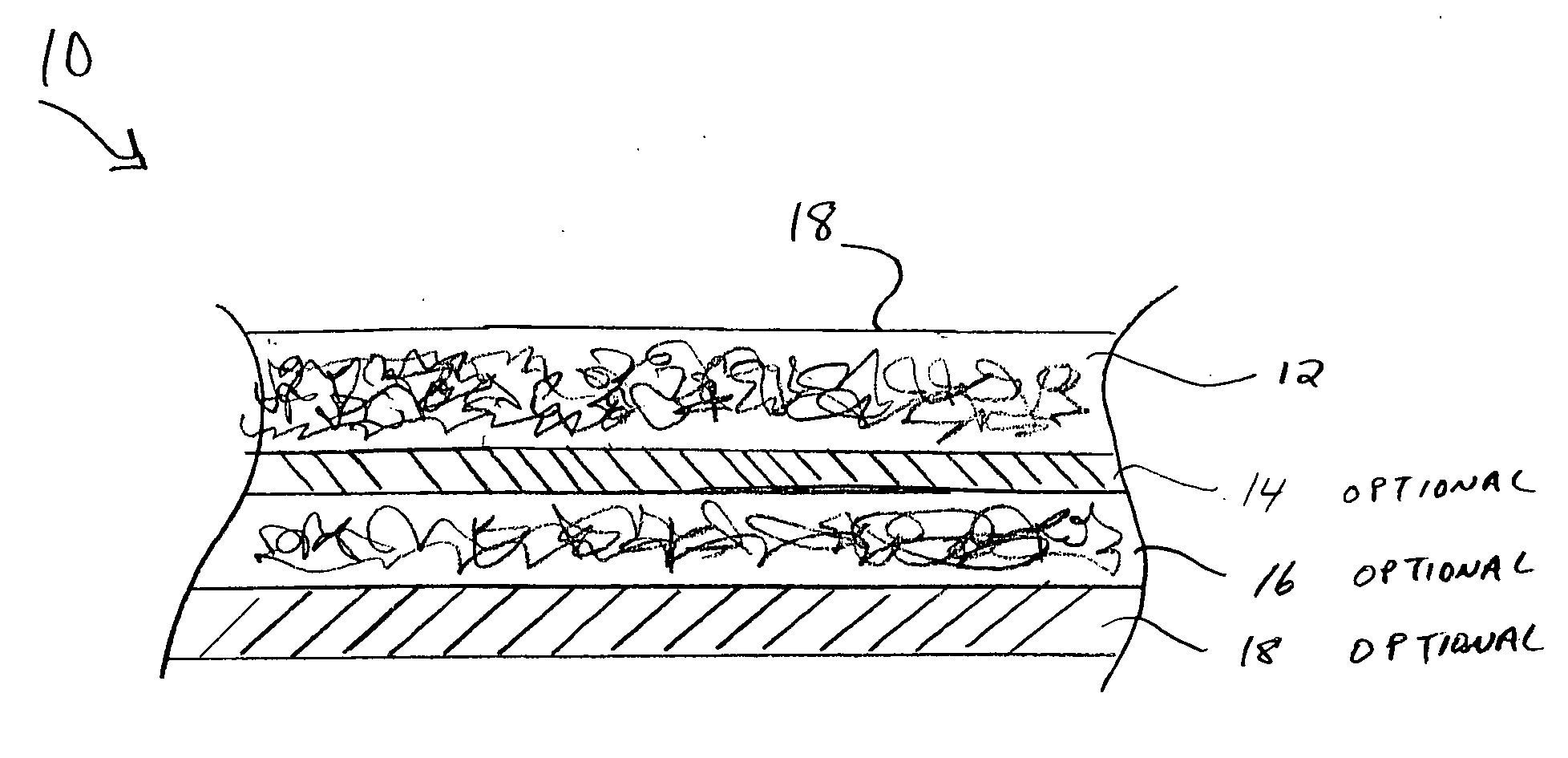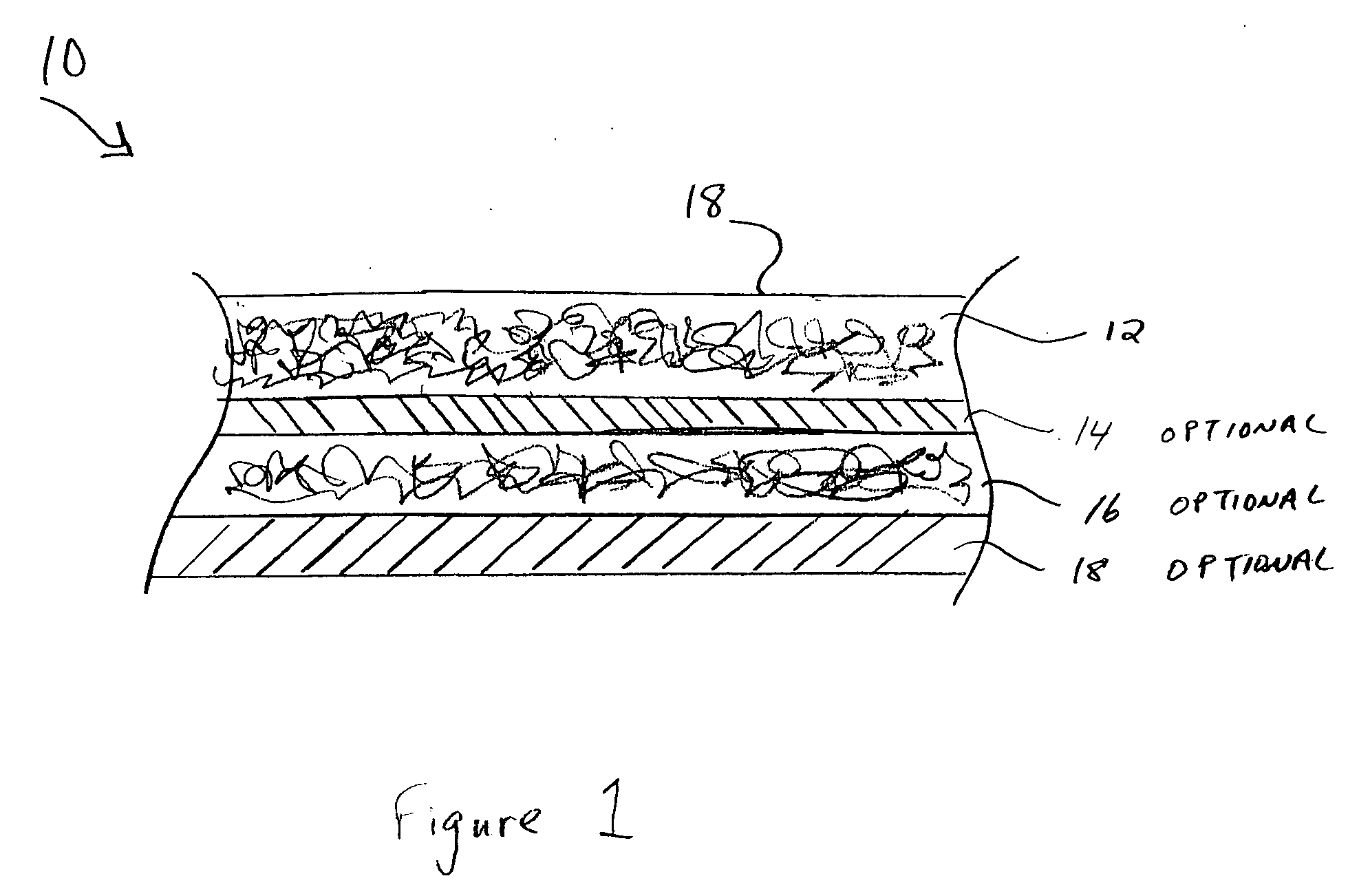Fire-retardant, lightweight aircraft carpet
- Summary
- Abstract
- Description
- Claims
- Application Information
AI Technical Summary
Benefits of technology
Problems solved by technology
Method used
Image
Examples
Embodiment Construction
[0015] The present invention relates to one or more layers of FR materials used as a lightweight carpet that withstands rigorous testing to fire standards and / or regulations such as, for example, ASTM flammability standards and similar regulations for flammability, smoke and toxicity promulgated by the U.S. Federal Aviation Administration (FAA) and European governments and airlines.
[0016] With reference to FIG. 1, a lightweight FR carpet 10 may be comprised of a face layer 12 of nonwoven fabric and, optionally but preferably, an extruded thermoplastic barrier layer 14 and a woven or nonwoven polymeric backing layer 16. The face layer can be formed in any length or width, and typically has a thickness between about 0.10 and 0.75 inches (0.04 to 0.25 mm) and preferably between about 0.18 and 0.31 inches. The extruded barrier layer typically has a thickness of about 0.001 to 0.040 inches, and the backing layer has a thickness from about 0.05 to 1.00 inches.
[0017] The fabric of the fa...
PUM
 Login to View More
Login to View More Abstract
Description
Claims
Application Information
 Login to View More
Login to View More - Generate Ideas
- Intellectual Property
- Life Sciences
- Materials
- Tech Scout
- Unparalleled Data Quality
- Higher Quality Content
- 60% Fewer Hallucinations
Browse by: Latest US Patents, China's latest patents, Technical Efficacy Thesaurus, Application Domain, Technology Topic, Popular Technical Reports.
© 2025 PatSnap. All rights reserved.Legal|Privacy policy|Modern Slavery Act Transparency Statement|Sitemap|About US| Contact US: help@patsnap.com


